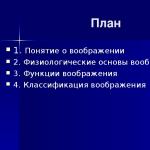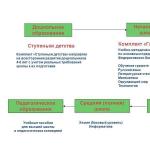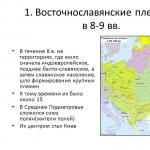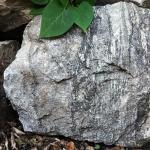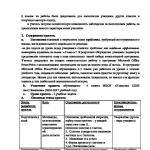In which hand does the king hold the scepter? Regalia of Royal Power: Crown, Scepter, Orb
The attributes of royal power emphasized the power and wealth of the Russian state: the golden decoration of the palace chambers, an abundance of precious stones, the scale of buildings, the grandeur of ceremonies and many items without which no Russian tsar is conceivable.
1
Golden Apple

A golden ball topped with a cross or a crown - orb - was first used as a symbol of Russian autocracy in 1557. Having come a long way, the power came to the Russian monarchs from Poland, for the first time taking part in the wedding ceremony of False Dmitry I. In Poland, we note, the power was called an apple, being a biblical symbol of knowledge. In the Russian Christian tradition, the orb symbolizes the Kingdom of Heaven. Since the reign of Paul I, the orb has been a blue, yakhon ball surmounted by a cross, studded with diamonds.
2
Shepherd's Staff

The scepter became an attribute of Russian power in 1584 during the wedding of Fyodor Ioannovich to the kingdom. This is how the concept of "scepter holder" appeared. The very word "scepter" is ancient Greek. It is believed that the prototype of the scepter was a shepherd's staff, which in the hands of the bishops was endowed with the symbolism of pastoral power. With the passage of time, the scepter was not only significantly shortened, but also, in its design, it no longer looked like a modest shepherd's crook. In 1667, the scepter appeared in the right paw of the double-headed eagle - the state emblem of Russia.
3
“They sat on the golden porch…”

The throne, or throne, is one of the most important symbols of power, first princely, then royal. Like the porch of a house, which was created for general admiration and admiration, they approached the creation of the throne with special trepidation, and usually several of them were made. One was installed in the Assumption Cathedral of the Moscow Kremlin - this throne participated in the church procedure for chrismation of the autocrat. The other is in the carved chambers of the Kremlin. The king sat on this throne after the secular procedure of assuming power, on which he also received ambassadors and influential persons. There were also "mobile" thrones - they traveled with the king and appeared in those cases when it was necessary to represent the royal power as convincingly as possible.
4
"You are heavy, Monomakh's hat"

The “golden hat” is mentioned in all spiritual letters, starting from the reign of Ivan Kalita. The symbol-crown of the Russian autocracy was allegedly made by oriental craftsmen at the end of the 13th - beginning of the 14th century and presented by the Byzantine emperor Konstantin Monomakh to his grandson Vladimir. The last tsar who tried on the relic was Peter I. Some researchers argue that Monomakh's hat is not a man's, but a woman's headdress - under the fur trim, allegedly, there were devices for temporal decorations. And the hat was made 200 years after the death of Vladimir Monomakh. Well, even if the story of the appearance of this attribute of royal power is just a legend, this did not prevent him from becoming the model by which all subsequent royal crowns were made.
5
Byzantine Mantles

The custom of wearing mantles, or barmas, came to Rus' from Byzantium. There they were part of the ceremonial attire of the emperors. According to legend, barmas were sent for Vladimir Monomakh by the Byzantine ruler Alexei I Komnenos. The annalistic mention of barm dates back to 1216 - all the princes wore mantles embroidered with gold. Since the middle of the 16th century, barmas have become an indispensable attribute of the royal wedding to the kingdom. From a gilded dish in the altar, at a certain moment they were served to the metropolitan by the bishops, who, in turn, received them from the archimandrites. After kissing and worshiping three times, the metropolitan laid barmas blessed with the cross on the king, after which the crowning followed.
6
“Oh, early, the guard gets up”

On both sides of the throne, anyone entering could see two tall handsome men, royal squires and bodyguards - rynds. They were not only a spectacular "attribute" at the reception ceremonies of foreign ambassadors, but also accompanied the king during campaigns and trips. You can envy the vestment of rynds: ermine coats, morocco boots, polar fox hats ... The place on the right hand was more honorable, hence the concept of “localism” came from. The struggle for the honorary title of the royal rynda was fought by the finest surnames.
7
Behind seven seals

The first known seal of the 12th century, carved from metal, was the print of Prince Mstislav Vladimirovich and his son Vsevolod. By the 18th century, Russian tsars used ring seals, desktop prints, and pendant seals. The small weight of the latter made it possible to wear them on a cord or on a chain at the waist. Seals were cut on metal or stone. A little later, rock crystal and its varieties become a favorite material. Interestingly, from the 17th century, seals began to be produced with a removable legend - a text, which allowed the new king to use the seal of his predecessor. At the end of the 17th century, Russian tsars had more than two dozen different seals, and the seal of the European engraver Johann Gendlinger with a mighty double-headed eagle served the Russian monarchs for more than a century, until the end of the reign of Nicholas I.
Plunging deep into the centuries, let's try to figure out what the scepter and orb mean in Russian history.
The scepter is a figured wand. It was made of silver, ivory, gold, framed with gems and used heraldic symbols. In the history of Russia, the scepter is the successor to the royal staff, which is a symbol of the power of the great princes and kings.
Speaking about the symbols of monarchical power, we need to dwell on the orb - a golden ball with a cross and a crown. The surface of the sphere was usually decorated with gems and symbols. From the old Russian word "dzharzha", which means "power", this name came about. The scepter and orb of the Russian tsars are the most ancient insignia of autocratic power.
Sovereign balls, or sovereign apples - as they were called in Rus', also served as attributes of the power of Roman, German and other emperors.
Crowns in the Russian Empire
Focusing on the regalia of Russian emperors, it is worth highlighting For coronations in the kingdom, they used the Cap of Monomakh.

In Russia, the rite of the first imperial coronation was held on the wife of Peter the Great, Ekaterina Alekseevna, who later became Catherine the First. It was for Catherine I that the first imperial crown in Russia was specially made.
Cap of Monomakh - an ancient regalia
The mention of the Cap of Monomakh appeared in the 16th century. in "The Tale of the Princes of Vladimir". It speaks of Constantine Monomakh, the Byzantine emperor who ruled in the 11th century. Hence the name. Most likely, Ivan Kalita was its first owner. According to available art history data, the Cap of Monomakh was made in the East in the 14th century. This is the most ancient crown of Russia. It was not worn as an everyday headdress, but was used when crowning Russian monarchs from 1498 to 1682. The crown consists of golden plates with patterns. At the top of the crown is a cross encrusted with precious stones. Monomakh's hat is framed with sable fur. The weight of the crown without fur is 698 grams.
Thus, the Cap of Monomakh, like the scepter and orb, has been a symbol of Russia since pre-Petrine times. By the way, it is credited with medicinal properties. So, it is believed that she is able to get rid of various ailments, especially headaches.
Scepter and Orb of Tsar Boris Godunov
The appearance of such concepts and objects as the scepter and orb as symbols of the power of the Russian state is associated with the reign of Boris Godunov. They were ordered to the masters at the court of Rudolf II. The production took place in Eger (the modern city of Cheb). When creating the set, jewelers followed the traditions of the Renaissance.

And although there is a legend saying that the scepter and orb were sent back in the XI century. Prince Vladimir Monomakh, in fact, they were presented to Tsar Boris by the Great Embassy of Emperor Rudolf II, who ruled in 1604, they found their use as part of his great attire.
Monomakh's scepter was made of gold with enamel details. Twenty diamonds, a large emerald, and other precious stones were used as decorations. The orb has an enameled inlay. The details depict scenes from the reign of David. The power is decorated with 37 large pearls, 58 diamonds, 89 rubies, as well as emeralds and tourmalines.
The crown is the most important regalia of Mikhail Fedorovich Romanov
The king owned the crown from the "Big Outfit". It was made in 1627 by deacon Efim Telepnev. He was the chief master in the Armory. The crown of the crown consists of two tiers. At the bottom of the outer frame is an eight-pronged diadem. The crown is framed in sable fur with precious stones. Already after the 18th century, the crown of the “Big Dress” became the crown of the “Kingdom of Astrakhan”.

Lost regalia of the Russian Empire
Only a few regalia have survived to this day. They found a worthy place to live in the Armory, but many of them are irretrievably lost. These include the "Great Crown" of Tsar Fedor I Ivanovich. Speaking about this work of art, it must be said about its unspeakable uniqueness. The crown was made in Istanbul at the end of the 16th century. As a gift, Patriarch Eremy II of Constantinople sent the crown to Tsar Fyodor I Ivanovich, who was the last of the Rurik dynasty. The “big crown” was worn by kings only for important celebrations. Around 1680, the crown was dismantled. Subsequently, its details were used for the "diamond hats" of Ivan V and Peter I.
Crown, scepter and orb on the royal coat of arms
In 1604, False Dmitry, on his small seal, had an image of three crowns under an eagle. Such an image appeared for the first time and did not last long. However, already in 1625, instead of the cross between the heads of the eagle, a third crown arose. This image appeared under Tsar Mikhail Fedorovich on a small state seal. The same was done in 1645 for his son Alexei on the Great State Seal.

The orb and the scepter were not on the coat of arms until the reign of Mikhail Fedorovich. In 1667, with the image of the state regalia of power, the state seal of Tsar Alexei Mikhailovich appeared. For the first time on June 4, 1667, the king gives an official and clear explanation of the symbolism associated with the three crowns. Each of the crowns depicted on the coat of arms and seal corresponds to the kingdoms - Siberian, Kazan, Astrakhan. And the scepter and power of Russia mean "Autocrat and Possessor." And already in 1667, on December 14, the first Decree on the coat of arms appears.
Crown, scepter and orb on the coat of arms of Russia
Centuries later, on December 25, 2000, the constitutional law "On the State Emblem of the Russian Federation" was adopted. This symbol of the state is represented by a heraldic shield. It is square and red. Its bottom corners are rounded.

It is located in the center with two heads, each of which is crowned with a small crown, and one large crown rises above them. The meaning of the three crowns is the personification of not only the sovereignty of the entire Russian Federation, but also its parts, that is, the subjects. The coat of arms also depicts a scepter and orb. Photos of regalia amaze with their beauty. The eagle holds a scepter in its right paw, and an orb in its left paw.
The scepter and orb of Russia are symbols of a single state and power. Also on the chest of the eagle there is an image of a silver rider on a horse. A man kills a black dragon with a spear. It is allowed to reproduce the coat of arms of the Russian Federation not only in color, but also in plain color. If necessary, it can be depicted without a heraldic shield.
On Wednesday, December 30, the Central Bank of Russia announced that, that is, three crowns will appear above the double-headed eagle, a shield with a horseman piercing the dragon will be depicted on his chest, a scepter will be clamped in the right paw of the eagle, and orb in the left.
Scepter
The scepter (from other Greek "σκῆπτρον" - to lean on a stick) is a symbol of the earthly power of the monarch. The prototype of the scepter is a shepherd's staff.
It is believed that the predecessor of the scepter was first used by the Egyptian pharaohs. Later, it became an attribute of commanders and leaders; it was made of gold, silver, ivory, decorated with precious stones and carvings. The scepter entered the composition of the attributes of the Russian royal power in 1584 during the wedding to the kingdom Fedor Ioannovich. On solemn occasions, the Moscow tsars held the scepter in their right hand, but when this was not possible, it was carried before the tsar by special solicitors. The scepters of the Moscow tsars are kept in the Armory in Moscow.
Power
The orb (from the old Slavs “drizhava” - power) is a symbol of the power of the monarch, given by God. It is a golden ball with a crown or cross.
The power passed to Russia from Poland (there it was called jabłko - “apple”), it was first used at the wedding to the kingdom False Dmitry I in 1605. The powers of the Moscow tsars are stored in the Armory in Moscow.
But this time we want to draw your attention to the regalia of Russian tsars, which very rarely leave the walls of the Armory. This is the orb and the scepter. In the showcases there is a unique opportunity to see them from all sides and marvel at the mastery of their execution.
Power. Western Europe, late 16th-17th centuries. Photo from the website of the Moscow Kremlin Museums.
There is no exact documentary data on the origin of the scepter and orb, but it is quite obvious that they were created by first-class Western European jewelers. These regalia are magnificent works of art from the late Renaissance.
The scepter has the appearance of a cast gold rod with graceful articulations and a masterfully executed grotesque ornament, masterfully colored with colored enamels.
Fragment. Scepter. Western Europe, late 16th-17th centuries.
Gold, silver, precious stones, pearls, casting, chasing, carving, enamel, shotting. Scepter - dl. 70.5.
Shot - decoration of the surface of a metal object with evenly spaced small dots, strokes, lines, etc., using special chasings or poissons.
Fragment. Scepter. Western Europe, late 16th-17th centuries.
Gold, silver, precious stones, pearls, casting, chasing, carving, enamel, shotting. Scepter - dl. 70.5.
Fragment. Scepter. Western Europe, late 16th-17th centuries.
Gold, silver, precious stones, pearls, casting, chasing, carving, enamel, shotting. Scepter - dl. 70.5.
Fragment. Scepter. Western Europe, late 16th-17th centuries.
Gold, silver, precious stones, pearls, casting, chasing, carving, enamel, shotting. Scepter - dl. 70.5.
The power crowned with a high cross is decorated with a large number of precious stones in elegant castes. Its upper part is decorated with high-relief, multi-colored enamel images of scenes from the life of the biblical King David: "Anointing of King David by the prophet Samuel", "David's victory over Goliath", "Return with victory", "Persecution from Saul".
Cast (stone setting) - a common detail of all jewelry with stones. There are two types of castes that differ in the principle of holding a stone - deaf and pronged. In the deaf ones, the stones are held by solid walls around the entire perimeter of the caste, and in the pronged ones, by separate racks (prongs) cut into the caste or soldered onto it.
Fragment. Power. "The Anointing of King David by the Prophet Samuel". Western Europe, late 16th-17th centuries.
Gold, silver, precious stones, pearls, casting, chasing, carving, enamel, shotting.
1. And the Lord said to Samuel, How long will you grieve over Saul, whom I rejected, that he should not be king over Israel? Fill your horn with oil and go; I will send you to Jesse the Bethlehemite, for among his sons I have provided for myself a king.
2 And Samuel said, How can I go? Saul will hear and kill me. The Lord said: take your heifer from the flock in your hand and say: “I have come to offer sacrifice to the Lord”;
3. and invite Jesse to the sacrifice; I will show you what to do, and you will anoint Me with the one I tell you about.
(I Samuel 16:1-3)
David is the second king of the people of Israel after Saul, the youngest son of Jesse from Bethlehem. According to the Bible, he reigned for forty years: for seven years and six months he was the king of Judea (with the capital in Hebron), then for 33 years he was the king of the united kingdom of Israel and Judea (with the capital in Jerusalem). The image of David is the image of an ideal ruler. The historicity of King David is the subject of scholarly debate.
Each scene is a wonderful sculptural miniature, which draws attention to the careful study of facial features, costume details, weapons, confident rendering of the landscape, complex movements of elongated figures with somewhat mannered gestures and poses.
Fragment. Power. "Victory over Goliath". Western Europe, late 16th-17th centuries.
Gold, silver, precious stones, pearls, casting, chasing, carving, enamel, shotting.
State - in 42.4; length circles 61; dm. bases 6.7.
48. When the Philistine got up and began to approach and approach to meet David, David hastily ran to the line to meet the Philistine.
49 And David put his hand into his bag, and took out a stone, and threw it with a sling, and struck the Philistine on the forehead, so that the stone pierced his forehead, and he fell on his face to the ground.
50. So David overcame the Philistine with a sling and a stone, and smote the Philistine and killed him; the sword was not in the hands of David.
51 Then David ran up and stepped on the Philistine, took his sword and drew it from its sheath, struck him and cut off his head with it; The Philistines, seeing that their strong man had died, ran.
(I Samuel 17:48-51)
The artistic features of these two monuments make it possible to believe that the scepter was created in the famous court workshops of Emperor Rudolf II, which were located in Prague, and the orb most likely belongs to the works of South German goldsmiths, with whom the emperor maintained close ties.
Fragment. Power. "Return with victory." Western Europe, late 16th-17th centuries.
Gold, silver, precious stones, pearls, casting, chasing, carving, enamel, shotting.
State - in 42.4; length circles 61; dm. bases 6.7.
6. As they went, at the return of David from the victory over the Philistines, women from all the cities of Israel went out to meet Saul the king with singing and dancing, with solemn timbrels and cymbals.
7 And the women who played cried out, saying, Saul has conquered thousands, but David tens of thousands!
(I Samuel 18:6,7)
King Saul is a biblical character, according to the Old Testament, the first king of the people of Israel and the founder of the united kingdom of Israel (circa 1029-1005 BC), the creator of the regular Jewish army, in the Old Testament narrative - the embodiment of the ruler, put on the kingdom by the will of God, but became displeasing to Him. Possibly a real historical person. He was chosen and anointed to the kingdom by the prophet Samuel, later did not fulfill his command and came into conflict with him, and the prophet secretly anointed the young David to the kingdom.
Fragment. Power. "Persecution from Saul". Western Europe, late 16th-17th centuries.
Gold, silver, precious stones, pearls, casting, chasing, carving, enamel, shotting.
State - in 42.4; length circles 61; dm. bases 6.7.
1 And David went out from there and fled to the cave of Adullam, and his brothers and all his father's house heard and came to him there.
2. And all the afflicted, and all the debtors, and all the grieving in soul, gathered to him, and he became ruler over them; and there were about four hundred men with him.
3. From there David went to the Massif of Moab and said to the king of Moab: Let my father and my mother stay with you until I know what God will do with me.
4. And he brought them to the king of Moab, and they dwelt with him all the time while David was in his hiding place.
5. But the prophet Gad said to David: Do not remain in this refuge, but go, go to the land of Judah. And David went and came to the forest of Hereth.
(I Samuel 22:1-5)
It is possible that these items include information about the bringing to Moscow in 1604 from Rudolf II to Tsar Boris Godunov with the embassy of Heinrich von Logau of regalia, including a scepter and an orb.

Power. Western Europe, late 16th-17th centuries. Gold, silver, precious stones, pearls, casting, chasing, carving, enamel, shotting.
Scepter. Western Europe, late 16th-17th centuries.
Gold, silver, precious stones, pearls, casting, chasing, carving, enamel, shotting. Scepter - dl. 70.5.
Instagram photo Museums of the Moscow Kremlin
.
We advise you to take advantage of this great opportunity to view these unique exhibits from an incredibly close distance and visit the exhibition "Boris Godunov from Servant to Sovereign of All Rus'".
The exhibition will last until January 31, 2016.
Address: Moscow Kremlin. Exhibition Hall in the Assumption Belfry.
Working hours: from 10 to 17, ticket offices from 9:30 to 16:30
Day off - Thursday.
Ticket price: 500 rub. There are benefits.
All the details .
Brueghel Peter. Misanthrope
→ Ball / Sphere (Armilary) / Board good and bad /
BREF / Royal rank apple
or orb, gold. a ball adorned with jewels. stones and crowned with a cross; one of the states. regalia; first mentioned at the wedding to the kingdom of Vasily Shuisky (1606).
In royal everyday life, the power, which we called in the Commonwealth and the Commonwealth, was introduced by Boris Godunov. “This apple is a sign of your kingdom. As you hold this apple in your hand, so hold the whole kingdom given to you from God, protecting it from enemies unshakably. The orb was handed along with the scepter during the ceremony of crowning the kingdom. Of the many powers of the 16th-19th centuries. the power of the large outfit of Mikhail Romanov stood out in particular. Its upper hemisphere, divided into four parts, bore the image of scenes from the life of King David. They held an apple, as a rule, in the right hand.
kingdom on earth, power over the World (in ancient times, a figure of Nike, the goddess of Victory, was added, in the Christian tradition - a cross).
It was first used as a sign of power by Roman emperors.
The ball is widespread among the personified virtues, the liberal arts, and some deities as a symbol of their universality:
Attribute of Truth, especially from the 17th century.
abundance
Justice, along with the scales and the sword
Philosophy, her foot can stand on the ball.
Fortune, originally indicated its changeability (As opposed to a solid cube, on which Faith and History sometimes stand)
Chance and Nemesis (Both of these allegorical figures are associated with Fortune and can be represented in a similar way)
Apollo
sometimes cupid
The globe (globe) is an attribute:
Laughing philosopher Democritus
one of the elements of still life
The celestial sphere (It may have stars or mythological figures of the constellations, but not necessarily so represented) is an attribute
personalized Astronomy (liberal arts)
Urania (muse of astronomy).
EMBLEM
State on the ground.
I despise earthly things.
Don't get too caught up in the things of this world
It is preferable to turn your attention to higher things.
The human soul was created for
To fly in the sky
Joyful outlet, compared to prison,
In which she is now!
There, freed from the bonds of the earth,
She can fly everywhere.
The symbol of the universe, resting on the back of cancer.
This picture clearly shows
As the world, like a cancer, moves backwards,
Like he's enjoying it a lot.
Movement in the opposite direction.
The laity teach pastors how to pray,
And children run the state
When the masters obey them.
Christianity
The symbol of power, and as such - a frequent attribute of God the Father can keep his foot on the heavenly ball.
The orb in the hands of Christ is a symbol of His sovereignty as the Savior of the World (SALVATOR MUNDI).
In the hands of the man of the monarch is the royal greatness, his power over the world.
Equipped with a cross - one of the insignia of the emperors of the Holy Roman Empire and the English kings, starting with Edward the Confessor.
The sphere, surmounted by a cross, symbolized the dominion of Christ, it is the emblem of the rulers of the Holy Roman Empire and - still - the British monarchs. Emperors, kings, and spiritual leaders such as the Pope usually hold the orb in their left hand.
And in the Frankfurt alchemical edition of 1618 (discovered by Silberer) in a book on alchemy published in Frankfurt: below is a globe that has wings, that is, the ball flies through time and space. And in this image you can see the signs of the triad and tetrad - a triangle and a square - they, apparently, denote matter and the life hidden in it, striving upwards.
| xxx |

